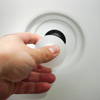 From camcorders to screwdrivers to cellphones, numerous devices run on rechargeable batteries—most powered by a chemical composition named lithium-Ion (Li-ion).
From camcorders to screwdrivers to cellphones, numerous devices run on rechargeable batteries—most powered by a chemical composition named lithium-Ion (Li-ion).
But while any two rechargeable batteries may outwardly appear as different as the devices they’re powering, in fact their internal differences are few.
As a result, getting the most power and the longest life out of any Li-ion battery is as straightforward as following some basic guidelines:
Always use the manufacturer’s batteries and chargers
Lithium–ion batteries can overheat if they are overcharged, so manufacturers build intelligent circuitry into each battery that works with matching circuitry in the charger or the device to closely control the amount of voltage used in a recharge. For this reason, you may find that off-brand replacement batteries won’t re-charge at all when used in the device or its charger, though you’ll still get to use whatever power is in this battery when it is new.
Stretch the “charge cycle time”
When you’ve used all of the available power in a battery, you’ve completed a “charge cycle,” and all batteries are designed to provide a particular number of charge cycles before replacement is considered necessary. But you don’t have to complete one charge cycle in a single instance. Recharging the battery to full when it’s 50 percent empty and then recharging a second time when it’s fifty percent empty again is equal to one charge cycle. That is, the two recharge instances are counted the same as having used 100 percent of the battery power once.
Be aware, though: The battery’s capacity—the amount of available power—drops slightly after each charge cycle. So, the capacity at the first cycle will be greater than at the 100th cycle, which will be greater than at the 500th cycle.
Be cognizant of your power demands
How you use a device will impact how quickly you drain the battery’s capacity, and thus how often you recharge. A notebook computer with Wi-Fi turned on will discharge the battery faster than one with Wi-Fi turned off.
Don’t leave the battery stagnant for too long: If the device will not be used frequently, it is recommended to discharge and recharge the battery at least once a month. And if you won’t use the device for more than six months, it is recommended to remove the battery for “long-term storage.”
Don’t store unused batteries fully charged or fully discharged
All batteries self-discharge when not used and will eventually go dead. But experts say storing a battery fully charged is not a good countermeasure—it could actually reduce the battery’s capacity over time. And storing a battery fully discharged could have an even worse effect, leaving it unable to be recharged. So, the experts say, it is best to store batteries that are within a 30 to 50 percent “state of charge” range.
Use and store batteries at a comfortable temperature
Both extreme heat and extreme cold are bad for Li-ion batteries. Very high temperatures (like in a closed car parked in the desert in June) can actually damage the battery’s inner workings. Meanwhile, very low temperatures (like in a refrigerator) will slow down the chemical reactions inside the battery, reducing its capacity (though unlike with heat, the battery will return to normal when it gets back to room temperature). As a rule of thumb, if the ambient temperature is comfortable for you, it will be comfortable for the battery.








